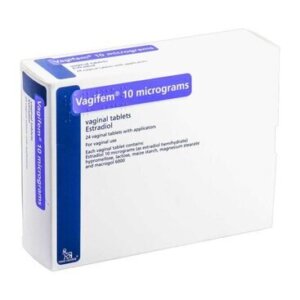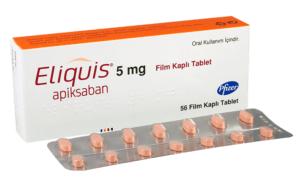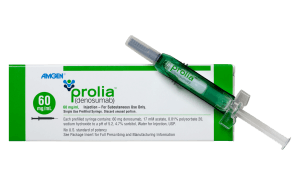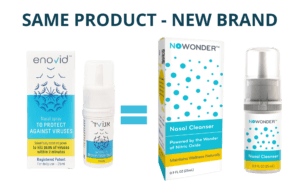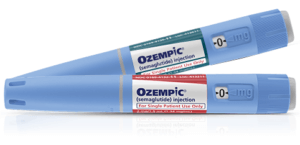 There is a widely-held public view that drug companies and pharmacies in the US gouge the public relentlessly without care for the public good or ethics. From that perspective, the complaint is that the only thing that matters to the companies is their bank balances. One of the unfortunate targets of this prevailing thinking is a drug that has revolutionized patient care in two separate areas over the past five years – Ozempic. Ozempic can be expensive, but the cost depends upon two things: the reason it is being prescribed and where the prescription is fulfilled.
There is a widely-held public view that drug companies and pharmacies in the US gouge the public relentlessly without care for the public good or ethics. From that perspective, the complaint is that the only thing that matters to the companies is their bank balances. One of the unfortunate targets of this prevailing thinking is a drug that has revolutionized patient care in two separate areas over the past five years – Ozempic. Ozempic can be expensive, but the cost depends upon two things: the reason it is being prescribed and where the prescription is fulfilled.
The problem of costly drugs in the US is pervasive. This article will take a single example of the highly popular diabetes and weight-loss drug Ozempic and explain how it became as expensive as it is. But Ozempic is just one of many such cases, and we will outline similar stories in future blogs.
Even though Ozempic can be expensive, the phenomenal demand coming from its better diabetes care has rocketed sales to people with type 2 diabetes worldwide. This indicates that millions of consumers feel they are getting value for their money for treatments for type 2 diabetes even at these prices.
What’s so special about Ozempic?
Ozempic delivers a measured dose of semaglutide, which belongs to a class of diabetes medications drugs called glucagon-like peptide-1 receptor agonists (GLP-1 agonists). Semaglutide mimics the GLP-1 hormone released naturally in the gastrointestinal tract when a person eats. Novo Nordisk developed it, and Ozempic was first released in 2017 with FDA approval for treating people who develop type 2 diabetes as adults.
For managing diabetes, Ozempic delivered several advantages over the other diabetes medications that were available then. First, it’s self-administered as a weekly injection, simplifying many other alternative treatment routines. Second, it reduced the possibility of two of the most prevalent dangers of other daily insulin medications: overdosing on insulin, which can induce hypoglycemia, or missed doses, causing hyperglycemia. Both of these are potentially severe outcomes.
One role of GLP-1 is to prompt the body to produce more insulin, which reduces blood sugar levels. Ozempic doesn’t contain insulin, but it works because semaglutide stimulates the body to release the hormone.
Ozempic hit the ground running by mitigating some of the major risks for people living with type 2 diabetes that are associated with other diabetes medication. Ozempic quickly became the “drug of choice” for treating type II diabetes. At that point, the production facilities allocated to US and European manufacturing plants could satisfy the demand levels, and there were no shortages.
Plot twist
A fortuitous observation was made during the clinical trials for Ozempic before its launch. Patients reported that they were losing weight and inches around the belly. This led Novo Nordisk to conduct a full double-blind placebo-controlled study (known as Semaglutide Treatment Effect in People, or simply STEP 1) in 2018 that lasted for two years. In the study, the patients in the group receiving semaglutide were experiencing substantial and sustained weight loss compared to those receiving a placebo. All participants in the double-anonymized trial followed the same diet and exercise regime, whether in the target or the placebo groups. On average, everyone who took Ozempic lost around 16 kilos (35 pounds) and 14 centimeters (6 inches) around the waist. This compared with the untreated, who lost about 3 kilos (7 pounds) and 4 centimeters (2 inches).
This launched Ozempic into a completely new sphere – coinciding with the rising problem of obesity in the Western world.
All current data points to the fact that Ozempic is a drug that is very good at two things: treating people with type 2 diabetes and assisting in weight loss in people who are overweight and have associated health problems, or clinically obese.
A pharmaceutical company’s dream, or in other words, the “money shot.”
Why did Ozempic become so expensive?
Within weeks after the release of the results of STEP 1, Ozempic was “trending” as the new weight loss miracle. There was a tsunami of demand for Ozempic, and the company’s production facilities were overwhelmed by orders. Building sophisticated new factories to produce complex drugs like Ozempic is expensive and time-consuming, and Novo Nordisk could not meet the demand in the short term.
As lady luck would have it, the surge in demand for Ozempic took off just as the COVID-19 pandemic started. Worldwide lockdowns, supply chain freezes, shortages of raw materials and on-site labor, and many other pandemic-related issues directly affected how Novo Nordisk could expand production with new factories. Demand continued to rise, spiraling well beyond even the most optimistic initial projections.
This part of the story is one that we consumers know all too well; when demand exceeds supply, it will drive prices higher. Companies trying to buy Ozempic got into bidding wars against each other, pushing wholesale prices higher and higher and locked-in a top-shelf price to be paid by the end health consumer.
The US Government Department of Health and Human Services reported to Congress that “drug shortages are an ongoing concern in the United States…and impact consumer costs in various ways. Consumers may incur increased costs in the form of higher out-of-pocket costs, higher insurance premiums, and adverse health outcomes due to a drug shortage. Healthcare systems also incur costs to manage or mitigate drug shortages.”
It’s important to realize that the product is priced differently depending on the consumer. Those that hold prescriptions for Ozempic to treat type II diabetes are usually covered by their health insurance or by one of the government health plans (Veterans Affairs, Medicare, and others). For these people, the out-of-pocket cost of Ozempic can be quite reasonable – sometimes as low as $25 per month, ranging up to $300 per month for lower levels of insurance coverage.
However, when a prescription for Ozempic is made for weight loss, not for people diagnosed with type 2 diabetes, that is called “off-label use.” Health insurance does not cover off-label use, nor do government health plans. Therefore, the average US health consumer prescribed Ozempic for off-label use (weight loss) will pay the full retail price of about $1250-$1500 per month in local US pharmacies.
About off-label prescribing
The FDA authorizes using all approved drugs for one or more specific conditions. However, doctors are the ones who are ultimately responsible for the treatment of specific patients and can use their discretion when prescribing, regardless of whether or not the FDA has approved the drug they are prescribing for the patient’s condition. This process of off-label prescribing is entirely legal and ethical, and about 20% of all prescriptions written in the US are for off-label use.
Often, health insurance companies (and the Federal health funds) do not extend their insurance coverage to cover off-label prescribing. Ozempic is just one example out of many. Another is Xeljanz, the first JAK inhibitor medication approved by the FDA for treating adults with several autoimmune diseases. Xeljanz is also being prescribed off-label because of its reported effects on dermatological conditions caused by autoimmune diseases.
What makes any new drug expensive?
Ozempic is nothing special when it comes to prices. Take it from research. Between 2009 and 2018, the average research and development investment required to bring a new drug to market was estimated to be $1.336 billion. That can be upped by 25-30 percent for the inflation in the last six years to get the equivalent of the current cost.
Drug companies have to earn all of that back, plus make a profit, during the window remaining after the patent (typically valid for twenty years) and the drug’s approval by the FDA, which comes many years after the granting of the patent. This can leave a company with a short period (seven years in some cases) when they have exclusive “brand protected” rights to market their drug. After that, competing ‘generic’ drugs can be launched that don’t carry the burden of all those up-front expenses. The only way drug research can be sustained is for developers to get the maximum ‘bang for their buck’ while they have exclusive rights to sell the drug.
Why can’t health insurers just say they will pay for Ozempic as a weight-loss drug?
The US Government Food and Drug Administration (FDA) is the only body to declare that a drug can be prescribed to treat a specific condition. Health insurance companies take the FDA’s rulings as their guides; otherwise, they could get into endless arguments with customers and suppliers and end up in court cases if there are any disputes. By sticking to the FDA’s policies, everything is clear upfront.
But as we have written here, a patient’s doctor is the only person with the authority to prescribe any drug – that they consider the appropriate treatment for their patient, considering all the relevant details. The FDA (and health insurers) have no say in this decision.
This is the essence of off-label prescribing, affecting whether a health fund must or will pay for the drug.
Online Israeli pharmacy to the rescue!
Unlike in the US, where the cost to the customer of any branded drug is highly dependent on the level of insurance each consumer has, here in Israel, the government caps all drug prices, which strictly limits the prices at which it can be sold to the public. This enables pharmacies based in Israel to offer Ozempic to US customers at prices far below what they would pay at their local brick-and-mortar or online pharmacies.
While no one would argue that Ozempic is a great deal, here in Israel, the officially capped price for Ozempic is just $550 for a month’s dose compared to $950 from US-based prescription drug websites. For those of you doing that math, that’s nearly a 50% savings.
Any order for Ozempic requires a valid doctor’s prescription. Due to worldwide demand for Ozempic and limited supply capacity, we can sell only a single month’s supply with each order, regardless of the prescription length.
Frequently Asked Questions
Is Ozempic in the top-ten drugs for its price?
Ozempic can be expensive, but even at the highest retail cost, Ozempic (semaglutide) is less expensive than many current branded drugs. In the list of the ten most expensive drugs in the US, the annual cost ranges from $2.12 million for Zolgensma down (a gene therapy medicine for treating spinal muscular atrophy) to $695,000 for Ravicti (used to manage urea cycle disorders). By comparison, the annual cost of Ozempic (from a typical Israeli online pharmacy) is $6,600.
What country has the highest drug prices?
US drug prices were compared with those in 32 advanced economies. On average, prices were around one-and-a-half times higher than those in comparable countries. The gap between prices was more significant for brand-name drugs like Ozempic.
Why is developing drugs so expensive?
Not all expenditure on drug research ends up with a marketable product, and developers have to recoup the cost of developing successful drugs as much as they do for the drug candidates that got only part-way through the process. It’s estimated that, on average, only one in ten makes it to market. When a new drug does get to the market, the company will charge a price that makes good business sense in light of the outlay and risks.
How are drugs priced in the US?
Local pharmacies get their supplies from distributors or warehouses if they are members of franchise chains. Most drugs are bought at an average wholesale price, and pharmacists add on their profit margin to determine their cash price. One of the reasons that Ozempic has become more expensive over the past few years is the need for more supply and competition between bulk buyers.





